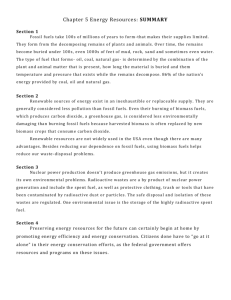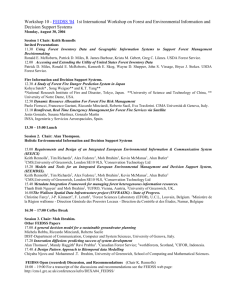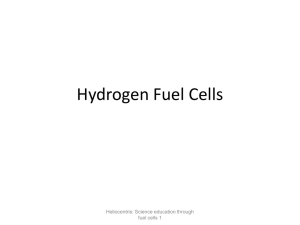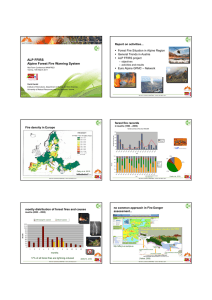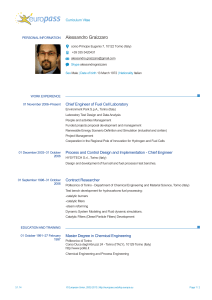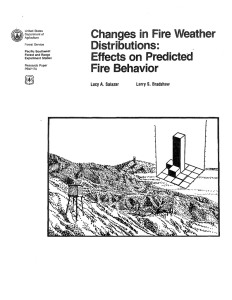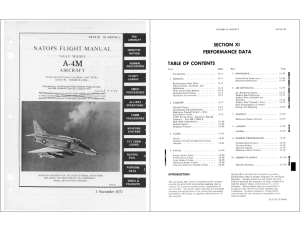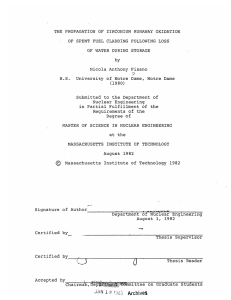INTRODUCTION: Altered fuels affect fire hazard and potential fire PROJECT OBJECTIVES: behavior by:
advertisement
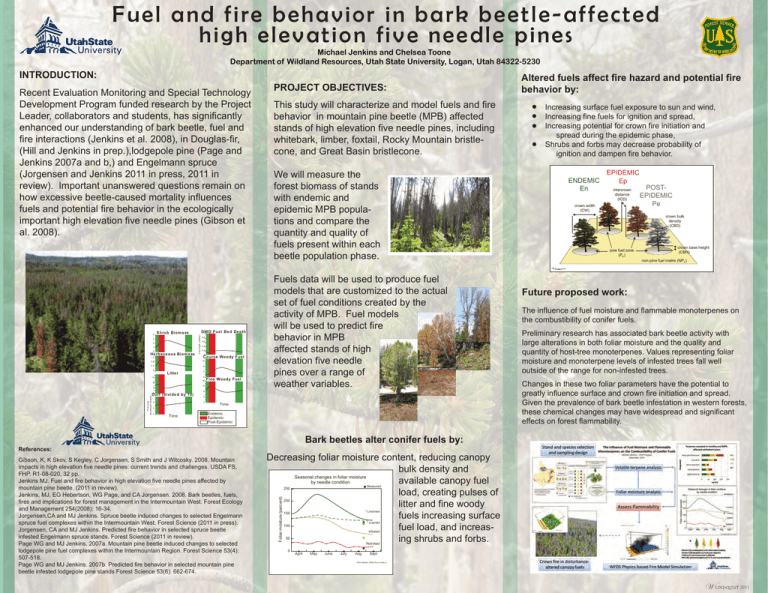
F u el a n d fi re b e ha vi or i n b a rk b eetle-affected h i g h e l e va ti on f i ve ne e d l e p ines Michael Jenkins and Chelsea Toone Department of Wildland Resources, Utah State University, Logan, Utah 84322-5230 INTRODUCTION: Recent Evaluation Monitoring and Special Technology Development Program funded research by the Project Leader, collaborators and students, has significantly enhanced our understanding of bark beetle, fuel and fire interactions (Jenkins et al. 2008), in Douglas-fir, (Hill and Jenkins in prep.),lodgepole pine (Page and Jenkins 2007a and b,) and Engelmann spruce (Jorgensen and Jenkins 2011 in press, 2011 in review). Important unanswered questions remain on how excessive beetle-caused mortality influences fuels and potential fire behavior in the ecologically important high elevation five needle pines (Gibson et al. 2008). PROJECT OBJECTIVES: This study will characterize and model fuels and fire behavior in mountain pine beetle (MPB) affected stands of high elevation five needle pines, including whitebark, limber, foxtail, Rocky Mountain bristlecone, and Great Basin bristlecone. Altered fuels affect fire hazard and potential fire behavior by: Increasing surface fuel exposure to sun and wind, Increasing fine fuels for ignition and spread, Increasing potential for crown fire initiation and spread during the epidemic phase, Shrubs and forbs may decrease probability of ignition and dampen fire behavior. We will measure the forest biomass of stands with endemic and epidemic MPB populations and compare the quantity and quality of fuels present within each beetle population phase. ENDEMIC En S hrub Bi om a ss 3 2 1 0 He rbace ous Bi om a ss 1.2 DW D Fue l Be d De pth 1 Fuel Depth (meters) 4 0.8 0.6 0.4 0.2 0 Course Woody Fuel 0.8 12 0.4 8 0 Litter 16 8 Fine Woody Fuel 12 4 8 0 Fuel Load (tonnes per hectare) 4 0 12 Duff (di vi de d by 10) 4 4 0 Time 2 0 Time Endemic Epidemic Post-Epidemic intercrown distance (ICD) crown width (CW) POSTEPIDEMIC Pe crown bulk density (CBD) pine fuel zone (Pz ) crown base height (CBH) non-pine fuel matrix (NPz ) W Fuels data will be used to produce fuel models that are customized to the actual set of fuel conditions created by the activity of MPB. Fuel models will be used to predict fire behavior in MPB affected stands of high elevation five needle pines over a range of weather variables. EPIDEMIC Ep 2010 Future proposed work: The influence of fuel moisture and flammable monoterpenes on the combustibility of conifer fuels. Preliminary research has associated bark beetle activity with large alterations in both foliar moisture and the quality and quantity of host-tree monoterpenes. Values representing foliar moisture and monoterpene levels of infested trees fall well outside of the range for non-infested trees. Changes in these two foliar parameters have the potential to greatly influence surface and crown fire initiation and spread. Given the prevalence of bark beetle infestation in western forests, these chemical changes may have widespread and significant effects on forest flammability. Bark beetles alter conifer fuels by: References: Decreasing foliar moisture content, reducing canopy bulk density and Seasonal changes in foliar moisture available canopy fuel by needle condition load, creating pulses of litter and fine woody fuels increasing surface fuel load, and increasing shrubs and forbs. Measured 250 Foliar moisture (percent) Gibson, K, K Skov, S Kegley, C Jorgensen, S Smith and J Witcosky. 2008. Mountain impacts in high elevation five needle pines: current trends and challenges. USDA FS, FHP, R1-08-020, 32 pp. Jenkins MJ. Fuel and fire behavior in high elevation five needle pines affected by mountain pine beetle. (2011 in review). Jenkins, MJ, EG Hebertson, WG Page, and CA Jorgensen. 2008. Bark beetles, fuels, fires and implications for forest management in the Intermountain West. Forest Ecology and Management 254(2008): 16-34. Jorgensen,CA and MJ Jenkins. Spruce beetle induced changes to selected Engelmann spruce fuel complexes within the Intermountain West. Forest Science (2011 in press). Jorgensen, CA and MJ Jenkins. Predicted fire behavior in selected spruce beetle infested Engelmann spruce stands. Forest Science (2011 in review). Page WG and MJ Jenkins. 2007a. Mountain pine beetle induced changes to selected lodgepole pine fuel complexes within the Intermountain Region. Forest Science 53(4): 507-518. Page WG and MJ Jenkins. 2007b. Predicted fire behavior in selected mountain pine beetle infested lodgepole pine stands Forest Science 53(6): 662-674. 200 * Live/new 150 * Live/old 100 Infested 50 Red/dead 0 April May June July Aug Sept *from Keyes, 2006 (Pinus strobus) W 2011
